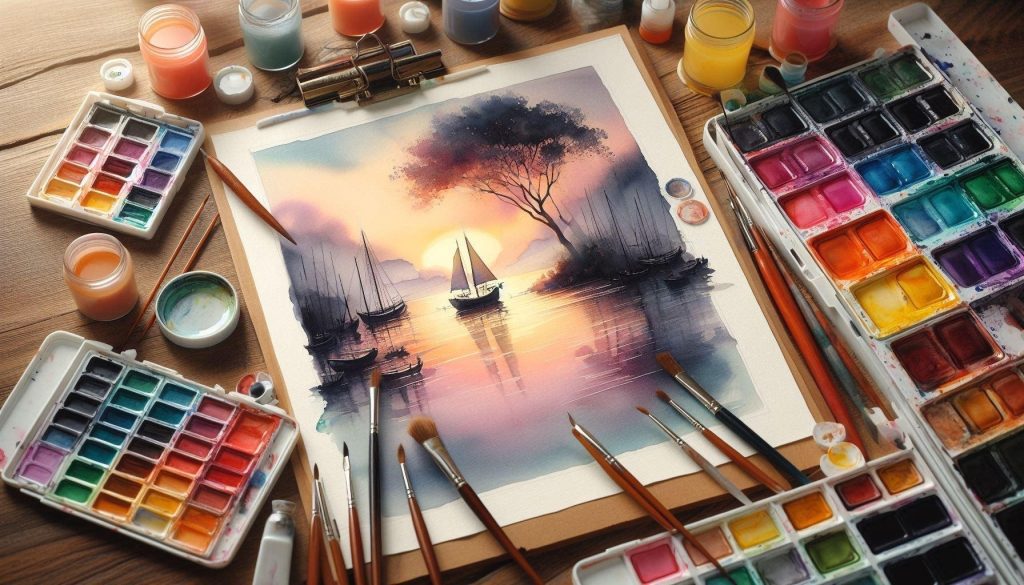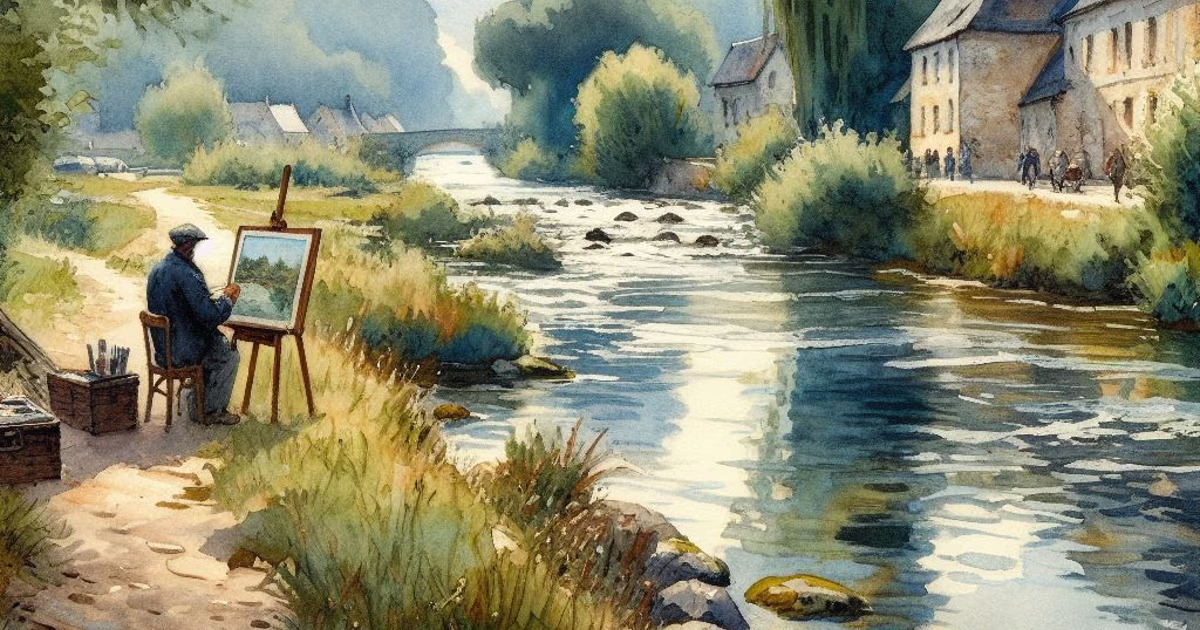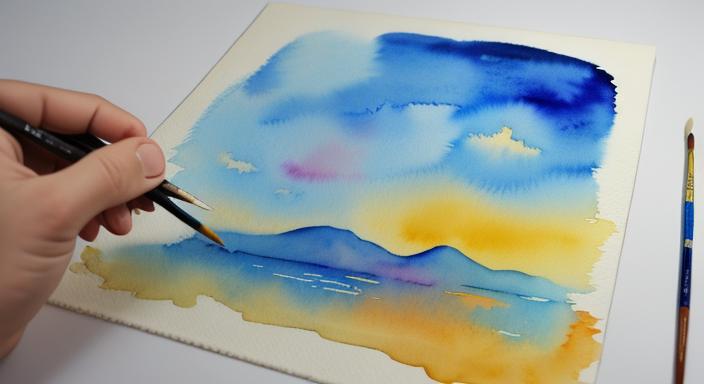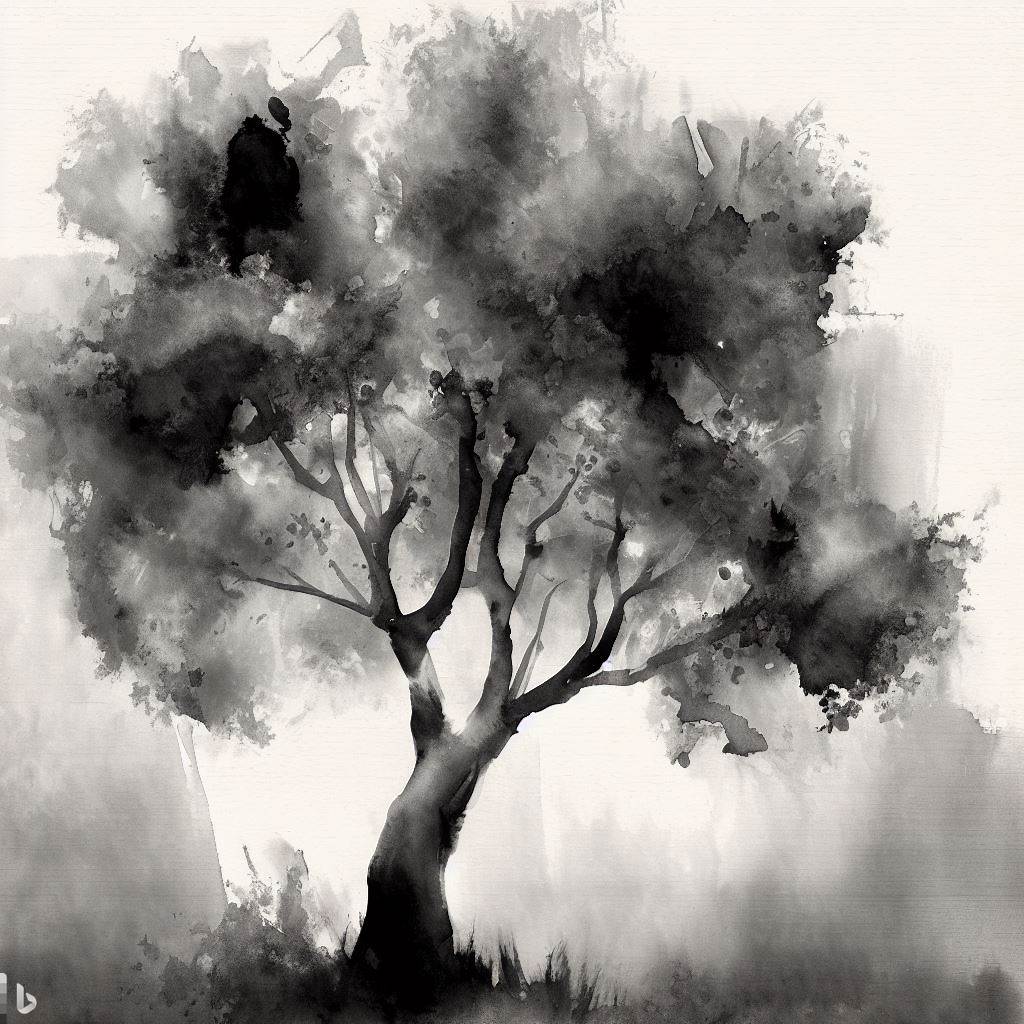Watercolor painting is a beautiful and captivating art form, but it can also be a challenging one to master. One of the most popular and versatile techniques is the wet-on-wet watercolor painting technique. If you’re new to this technique or struggling to get the hang of it, don’t worry! We’ve got your back with this comprehensive guide.

What is the Wet-on-Wet Technique?
The wet-on-wet technique, also known as “alla prima,” involves painting onto a pre-wetted surface. This method allows the pigments to blend and mingle on the paper, creating soft, dreamy, and organic effects that are unique to watercolor painting.
Curious about how it works? Here’s a quick breakdown:
- You start by wetting a section of your watercolor paper with clean water.
- While the paper is still damp, you apply your pigments directly onto the wet surface.
- The colors blend and flow together, creating beautiful, unpredictable effects.
Pretty cool, right?
Why Use the Wet-on-Wet Technique?
There are several reasons why artists love the wet-on-wet technique:
- Spontaneity: The wet-on-wet approach encourages spontaneity and experimentation, as you can never fully control how the colors will blend and flow.
- Organic Blending: This technique allows for organic and seamless blending of colors, creating soft and natural transitions.
- Atmospheric Effects: The wet-on-wet method is perfect for capturing atmospheric effects, such as misty landscapes or dreamy skies.
- Creativity: With the wet-on-wet technique, you can create unique and unexpected results, fostering your creativity and artistic expression.
Now that you know the basics, let’s dive into the nitty-gritty of mastering this technique!
Gather Your Supplies
Before you start, make sure you have the following supplies on hand:
- Watercolor Paper: High-quality, thick watercolor paper is a must. Look for papers with a cold press or rough surface, as they’ll better absorb and hold the moisture. >> Shop here for top range of Paper
- Watercolor Paints: Choose high-quality paints, either in tubes or pans. Transparent and staining colors work best for the wet-on-wet technique. >> Shop here for top range of Paints
- Brushes: Invest in a variety of high-quality brushes, including round and flat brushes in different sizes. >> Shop here for top range of Brushes
- Palette: A large palette with room for mixing colors is essential. >> Shop here for top range of Palettes
- Water Containers: You’ll need at least two containers for clean water and for rinsing your brushes.
- Paper Towels: Keep plenty of paper towels on hand for blotting and cleaning up.
PRO TIP: Experiment with different paper textures and weights to find the one that works best for your desired effects.
| Rank | Brush | Price | Description |
|---|---|---|---|
| 1 | Winsor & Newton Series 7 Kolinsky Sable Brush | $29.95 | A high-quality brush that is perfect for wet-on-wet painting. It has a long, tapered point that allows you to create fine details. |
| 2 | Raphael Kolinsky Sable Brush | $34.95 | Another high-quality brush that is perfect for wet-on-wet painting. It has a soft, flexible tip that allows you to create smooth blends. |
| 3 | Winsor & Newton Series 1 Kolinsky Sable Brush | $19.95 | A good-quality brush that is perfect for beginners. It has a long, tapered point that allows you to create fine details. |
| 4 | Da Vinci Maestro Kolinsky Sable Brush | $24.95 | A high-quality brush that is perfect for all types of watercolor painting. It has a soft, flexible tip that allows you to create smooth blends. |
| 5 | Princeton Neptune Kolinsky Sable Brush | $22.95 | A good-quality brush that is perfect for beginners. It has a long, tapered point that allows you to create fine details. |
| 6 | Raphael 8404 Kolinsky Sable Brush | $39.95 | A high-quality brush that is perfect for wet-on-wet painting. It has a soft, flexible tip that allows you to create smooth blends. |
| 7 | Winsor & Newton Series 3 Kolinsky Sable Brush | $14.95 | A good-quality brush that is perfect for beginners. It has a long, tapered point that allows you to create fine details. |
| 8 | Da Vinci Cosmopolite Kolinsky Sable Brush | $29.95 | A high-quality brush that is perfect for all types of watercolor painting. It has a soft, flexible tip that allows you to create smooth blends. |
| 9 | Princeton Heritage Kolinsky Sable Brush | $26.95 | A good-quality brush that is perfect for beginners. It has a long, tapered point that allows you to create fine details. |
Prepare Your Paper
Proper paper preparation is key to successful wet-on-wet painting. Here’s how to do it:
- Stretch Your Paper: Stretching your watercolor paper helps prevent buckling and warping. You can stretch it by soaking the paper in clean water, then stapling or taping it to a board while it’s damp.
- Wet the Surface: Once your paper is stretched, wet the area you plan to paint on with clean water. You can use a large, flat brush or a spray bottle for even coverage.
PRO TIP: Tilt your paper slightly to allow the water to pool and create interesting patterns and effects.
| Rank | Paper | Price | Description |
|---|---|---|---|
| 1 | Arches 140 lb Cold-Pressed | $12.99 | Arches 140 lb Cold-Pressed paper is a classic choice for watercolor painting. It is made from 100% cotton fibers and has a smooth, even surface. The paper is also very absorbent, which makes it ideal for wet-on-wet painting. |
| 2 | Fabriano Artistico 140 lb Cold-Pressed | $13.99 | Fabriano Artistico 140 lb Cold-Pressed paper is another great option for watercolor painting. It is made from 100% cotton fibers and has a smooth, slightly textured surface. The paper is also very absorbent, which makes it ideal for wet-on-wet painting. |
| 3 | Saunders Waterford 140 lb Cold-Pressed | $14.99 | Saunders Waterford 140 lb Cold-Pressed paper is a high-quality paper that is made from 100% cotton fibers. It has a smooth, slightly textured surface and is very absorbent. This paper is ideal for both wet-on-wet and dry painting techniques. |
| 4 | Canson XL Watercolor Paper 300 g/m² | $10.99 | Canson XL Watercolor Paper is a good quality paper that is made from 100% cotton fibers. It has a smooth, slightly textured surface and is very absorbent. This paper is ideal for both wet-on-wet and dry painting techniques. |
| 5 | Strathmore 400 Series Watercolor Paper | $9.99 | Strathmore 400 Series Watercolor Paper is a good quality paper that is made from 100% cotton fibers. It has a smooth, slightly textured surface and is very absorbent. This paper is ideal for both wet-on-wet and dry painting techniques. |
| 6 | Blick Studio Watercolor Paper | $7.99 | Blick Studio Watercolor Paper is a good quality paper that is made from 100% cotton fibers. It has a smooth, slightly textured surface and is very absorbent. This paper is ideal for both wet-on-wet and dry painting techniques. |
| 7 | Daler-Rowney Simply Watercolor Paper | $7.99 | Daler-Rowney Simply Watercolor Paper is a good quality paper that is made from 100% cotton fibers. It has a smooth, slightly textured surface and is very absorbent. This paper is ideal for both wet-on-wet and dry painting techniques. |
| 8 | Reeves Watercolor Paper | $6.99 | Reeves Watercolor Paper is a good quality paper that is made from 100% cotton fibers. It has a smooth, slightly textured surface and is very absorbent. This paper is ideal for both wet-on-wet and dry painting techniques. |
| 9 | Mohawk Superfine Watercolor Paper | $5.99 | Mohawk Superfine Watercolor Paper is a good quality paper that is made from 100% cotton fibers. It has a smooth, slightly textured surface and is very absorbent. This paper is ideal for both wet-on-wet and dry painting techniques. |
Apply Your Colors
Now for the fun part – painting! Here’s how to apply your colors using the wet-on-wet technique:
- Start with Light Colors: Begin by dropping in your lightest colors onto the wet paper. The pigments will spread and blend naturally.
- Add Darker Colors: Once the light colors have had a chance to bloom, add your darker colors to the wet areas. Watch as they blend and mingle with the lighter hues.
- Experiment with Techniques: Try different techniques, such as dropping color directly onto the paper, dragging a brush through the wet pigments, or using a straw to blow the colors around.
PRO TIP: Allow time for the colors to blend and settle before adding more pigment or details.
Embrace the Unexpected
One of the most beautiful aspects of the wet-on-wet technique is its unpredictability. Embrace the unexpected and enjoy the happy accidents that occur! Here are a few tips for embracing the spontaneity:
- Go with the Flow: Don’t try to force the colors to blend in a specific way. Let them flow and mingle naturally.
- Experiment with Different Techniques: Try different techniques, such as dropping color directly onto the paper, dragging a brush through the wet pigments, or using a straw to blow the colors around.
- Incorporate Textures: Experiment with incorporating textures, such as salt or plastic wrap, to create interesting effects.
PRO TIP: Take a step back and observe your painting from a distance to see the bigger picture and embrace the natural flow of the colors.
Finishing Touches
Once you’re happy with the overall blend and flow of your wet-on-wet painting, it’s time to add the finishing touches:
- Let it Dry: Allow your painting to dry completely before adding any final details or touches.
- Add Details: Use a smaller brush and more concentrated pigments to add details, such as fine lines, textures, or highlights.
- Consider Glazing: Glazing is the process of applying thin, transparent layers of color over dried areas to create depth and vibrancy.
PRO TIP: Scan or photograph your painting before adding details, so you can capture the beauty of the initial wet-on-wet blend.
Share Your Work and Connect with Others
Watercolor painting is a lifelong journey, and connecting with fellow artists can be incredibly inspiring and rewarding. Here are a few ways to share your work and connect with others:
- Post Your Paintings on Social Media: Share your wet-on-wet creations on platforms like Instagram, Facebook, or Twitter, using relevant hashtags like #watercolorpainting, #wetontechnique, or #artistsoninstagram.
- Join Online Communities: Participate in online watercolor communities, forums, or groups to connect with other artists, share tips and techniques, and receive feedback on your work.
- Attend Local Art Events: Look for local art classes, workshops, or meetups where you can learn from experienced watercolorists and connect with fellow artists in your area.
PRO TIP: Don’t be afraid to ask for feedback or advice from more experienced artists – we all started somewhere, and the watercolor community is incredibly supportive and welcoming.
Mastering the Wet-on-Wet Technique Takes Time and Practice
The wet-on-wet technique is a beautiful and rewarding approach to watercolor painting, but it does take time and practice to master. Embrace the process, experiment with different techniques, and most importantly, have fun! Remember, each painting is a unique expression of your creativity, and the journey is just as important as the destination.
So, grab your brushes, wet your paper, and let the colors flow! Who knows what beautiful masterpieces you’ll create? Happy painting!


